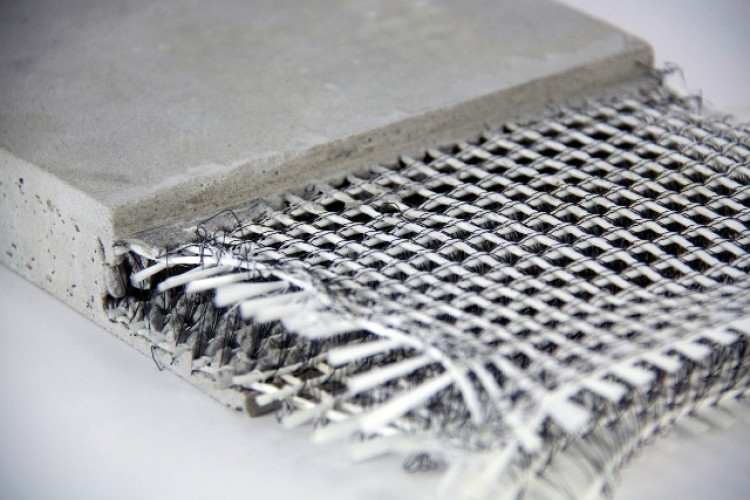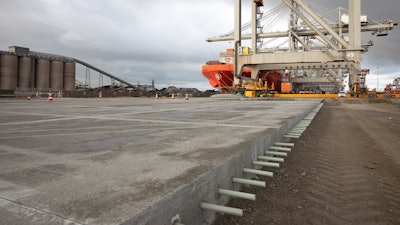Unlocking the Ecological Advantages of Recycled Composites in Construction and Layout
In the realm of construction and layout, the usage of recycled composites holds significant assurance for boosting sustainability methods and minimizing environmental effect (composites). By including these innovative products, there is a potential to address essential concerns such as waste minimization, energy preservation, and a reduction in carbon footprint. The shift towards a much more lasting future in these sectors rests on opening the complete potential of recycled composites. This conversation will check out the multifaceted benefits and obstacles linked with incorporating recycled compounds into construction and layout, providing a peek into the transformative possibilities that lie ahead.

Ecological Impact Reduction
The decrease of ecological impact through the use of recycled composites in construction and design plays a critical duty in lasting practices. By integrating recycled composites right into building products, the construction industry can considerably decrease its carbon impact and add to a much more environmentally friendly future. These sustainable materials, made from repurposed plastics, timber fibers, or various other recycled aspects, supply a viable choice to conventional building materials without compromising on high quality or longevity.
Recycled composites aid divert waste from land fills and reduce the requirement for removing basic materials, hence saving all-natural sources. Additionally, the production process of these composites frequently consumes less power and produces fewer greenhouse gases compared to creating virgin materials (composites). This shift in the direction of utilizing recycled compounds not only minimizes environmental harm yet additionally promotes a round economic climate by urging the reuse of products that would otherwise be thrown out
Waste Reduction
With a concentrate on lessening waste in construction and design, the integration of recycled composites provides a lasting solution to reduce environmental effect. Waste reduction is a critical element of lasting techniques, and making use of recycled compounds presents a chance to accomplish this goal successfully. By utilizing materials that have actually already served their preliminary objective, such as recycled plastics or reclaimed wood fibers, the construction and design sectors can substantially decrease the quantity of waste produced and sent to land fills.
Recycled composites have the potential to draw away significant amounts of waste from typical disposal approaches, contributing to a more circular economy where resources are used effectively. Additionally, the manufacturing process of recycled composites often eats much less energy and creates fewer emissions compared to virgin products, additionally decreasing the ecological footprint of building and layout projects.
Applying waste minimization methods with the incorporation of recycled composites not only aids in saving natural deposits yet additionally advertises a more lasting technique to building and making for a greener future.
Power Conservation
Including recycled compounds not just reduces waste in construction and design but also plays an essential duty in enhancing energy Web Site preservation methods within the market. Using recycled composites in building and construction can dramatically contribute to energy conservation through different means. Firstly, the production of virgin materials generally requires considerable power inputs, whereas making use of recycled compounds takes in less energy, consequently minimizing overall power intake. Furthermore, incorporating recycled composites can contribute to much better insulation buildings in structures, minimizing the demand for too much heating or air conditioning, and consequently lowering energy usage for Full Report climate control. The light-weight nature of several recycled composites can lead to lighter structures, calling for much less power for transportation and installment. By advertising making use of recycled composites in building and construction and layout, the sector can make substantial strides in the direction of attaining energy efficiency and decreasing its carbon impact, ultimately adding to an extra lasting developed environment.
Carbon Impact Decrease
Enhancing sustainability techniques through the usage of recycled compounds in building and construction and style considerably decreases the carbon footprint of the industry. By integrating recycled materials right into the manufacturing of compounds, the need for virgin resources reduces, leading to reduced power intake and greenhouse gas emissions associated with traditional production procedures. This reduction in carbon footprint is vital in combating environment change blog here and promoting a much more eco-friendly method to building and design.
The carbon footprint reduction accomplished with the adoption of recycled compounds aligns with the global push towards sustainable methods and the reduction of industrial emissions. Ultimately, by prioritizing the assimilation of recycled compounds, the industry can make significant strides in reducing its carbon impact and adding to an extra lasting future.
Lasting Future
The assimilation of recycled compounds in building and construction and layout not just addresses immediate ecological concerns yet also lays a solid foundation for a sustainable future in the market. By incorporating recycled compounds into structure materials and items, the construction and style fields can considerably reduce their reliance on virgin sources, causing a more round economic situation. This change in the direction of sustainability is important for reducing the environmental influence of conventional building practices, which usually cause high degrees of waste generation and resource exhaustion.

Verdict
In conclusion, recycled compounds offer considerable ecological advantages in building and construction and design by reducing environmental effect, minimizing waste, saving energy, lowering carbon impact, and promoting a lasting future. Embracing making use of recycled composites can contribute to a more environmentally-friendly technique to building and layout, eventually leading to a much more lasting and greener future for all.
The reduction of environmental effect via the use of recycled composites in building and layout plays an important role in sustainable methods.With a focus on reducing waste in building and construction and layout, the assimilation of recycled compounds provides a lasting remedy to lower environmental effect. By promoting the usage of recycled composites in building and style, the sector can make substantial strides towards accomplishing energy efficiency and minimizing its carbon impact, inevitably contributing to a more lasting built environment.

Comments on “High-Performance Composites for Eco-Friendly Building And Construction”